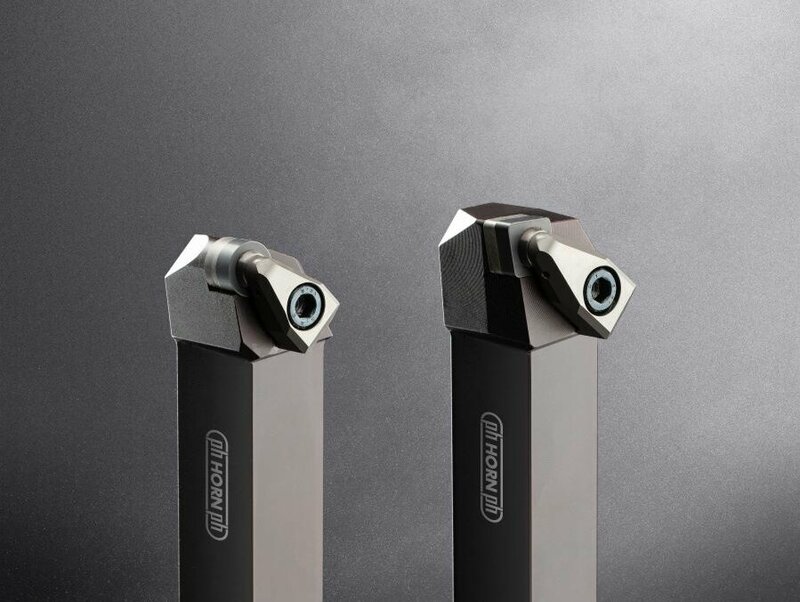Extremely hard grade for strong brakes
Horn is launching a new product range for the economical machining of brake discs.
This includes solid CBN ISO inserts and solid CBN-tipped full radius and shaped inserts. In addition to the inserts, stable tool carriers round off the product range. "With the performance of the grade, we can almost bring a lathe to its knees," says Horn product manager for ultra-hard cutting materials, Aribert Schroth. We are talking about cubic boron nitride (CBN), or solid CBN to be precise. The grade has no metallic bonding phase and therefore has the highest hot hardness of all cutting materials. In addition, the abrasion resistance increases compared to CBN substrates. Solid CBN is mainly used for cast iron machining.
Cutting speeds of well over 1,000 m/min (3,280.84 ft/min), depths of cut of several millimetres and feed rates of up to 0.7 mm/rev (0.028"/rev) are typical when machining brake discs made from cast materials. The tool system used must be able to keep up and, above all, last a long time. The tool life requirements are high due to the price per cutting edge of solid CBN. Depending on the operation and metal removal rate, well over 1,000 brake discs can be machined per insert corner. Horn offers two different tool solutions for machining the heat compensation groove of a brake disc. The tipped S117 profile grooving insert is ideal for large batch production in terms of speed and long tool life. During the process, the groove is produced in just under two seconds in a single operation. For greater flexibility, HORN provides S229 tipped full radius inserts. They offer the option of copy turning the heat compensation groove in around four seconds. Regrinding and re-tipping are possible with both types.
For further machining applications on a brake disc, Horn offers a solid full CBN ISO S insert with eight cutting edges. In conjunction with the tool holder, the tool system is suitable for roughing and finishing. The neutral design of the inserts fully utilises the number of cutting edges. This means that eight cutting edges per ISO insert are available for most turning operations. The tool holder combines important criteria: The frictional connection between the carbide thrust pad and the insert occurs via a defined annular surface. This prevents compressive stresses on the CBN insert. Engagement of the thrust pad in the bore of the insert pulls it into the insert seat of the tool holder with a secondary force. This prevents clamping errors and increases precision.
